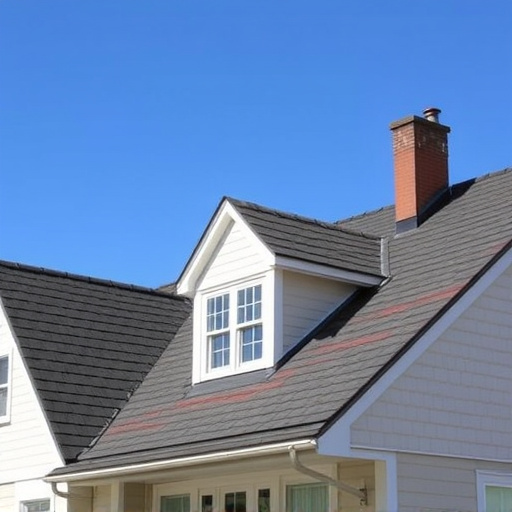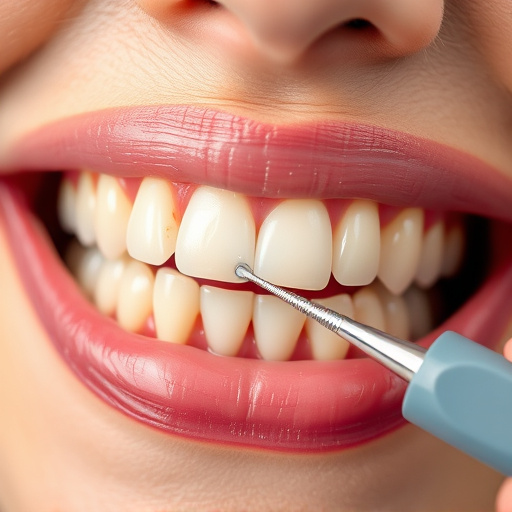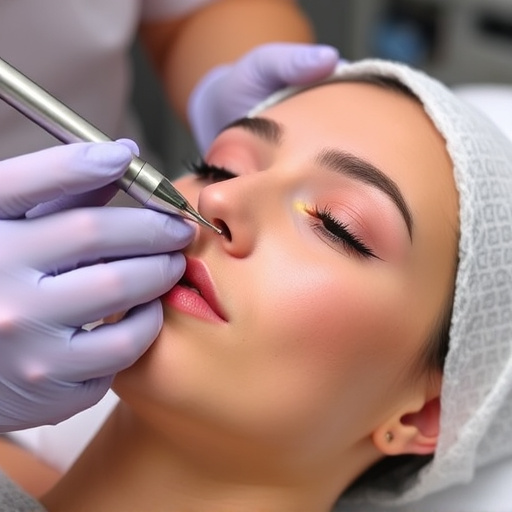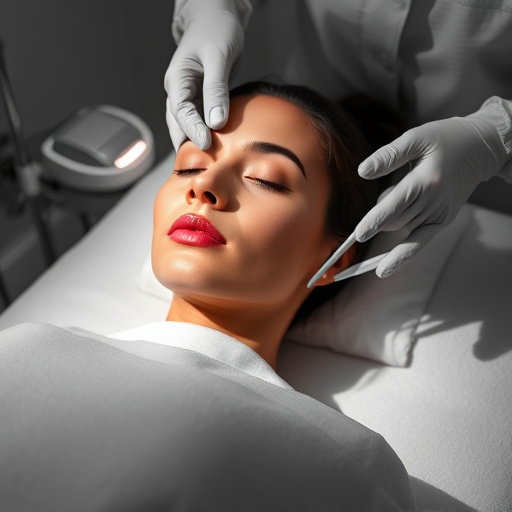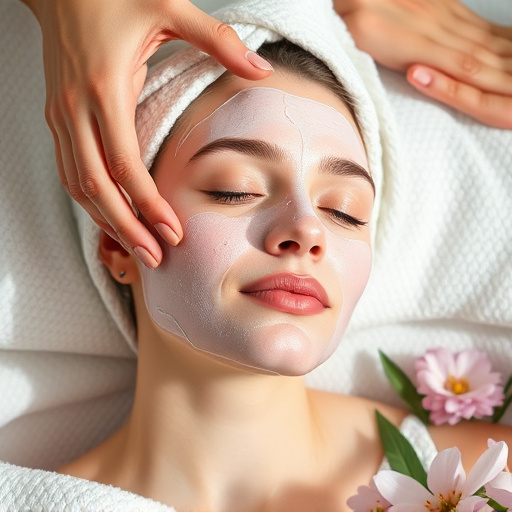A lactic acid peel, using natural alpha hydroxy acid from milk sugar, exfoliates skin, boosts collagen production, and improves complexion. Results vary based on concentration, depth of penetration, skin type, health, and pairing with other treatments. Initial improvements in texture and appearance seen within 3-7 days; more significant changes, like reduced wrinkles, take 2-4 weeks. Optimal results require consistent skincare and follow-up services or products.
- Understanding Lactic Acid Peel Process and Expectations
- Factors Affecting Appearance of Results
- Time Frames: When to Expect Visible Improvements
Understanding Lactic Acid Peel Process and Expectations
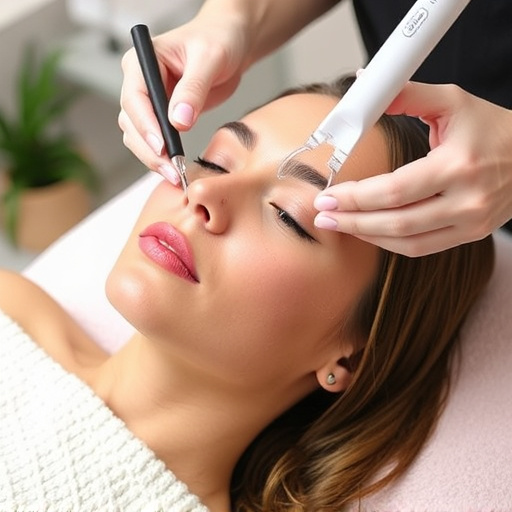
Understanding the Lactic Acid Peel Process and What to Expect
A lactic acid peel is a popular facial treatment that involves applying a solution of lactic acid to the skin to promote cell turnover and enhance its appearance. Lactic acid, a natural alpha hydroxy acid (AHA), is derived from milk sugar and is known for its hydrating properties. During the peel, the acid gently exfoliates the top layer of the skin, removing dead cells and revealing smoother, brighter, and more even-toned skin below. This process also stimulates collagen production, which helps to improve skin texture and elasticity over time.
When considering a lactic acid peel, it’s essential to manage expectations. Results may vary based on the concentration of the acid used and your skin type. Generally, you can expect to see some redness and mild irritation immediately after the treatment, similar to a sunburn. These symptoms typically subside within 24-48 hours. More significant changes, such as reduced fine lines, improved texture, and a more even complexion, may take several weeks or months of regular treatments to become apparent. It’s crucial to follow your dermatologist or esthetician’s aftercare instructions for optimal results and minimal downtime.
Factors Affecting Appearance of Results

The appearance of results from a lactic acid peel can vary depending on several factors. One key factor is the concentration of the acid used; higher concentrations may yield faster, more noticeable changes in skin texture and tone but also carry a greater risk of irritation. Another important consideration is the depth of penetration into the skin. Lactic acid peels range from superficial to medium-depth, with deeper peels potentially offering more dramatic results but requiring longer recovery times.
In addition, individual skin responses play a significant role. Factors like skin type, age, and overall health can influence how quickly and visibly results become apparent. Those with thicker, oilier skin might experience more immediate improvements compared to individuals with thinner, drier complexions. Incorporating lactic acid peel into a comprehensive skincare routine, including regular cleansing, hydration, and sun protection, can also enhance the visibility of desired outcomes, making it essential to pair these treatments with other effective facial treatments like microneedling therapy or non-surgical treatments for optimal results.
Time Frames: When to Expect Visible Improvements

After a lactic acid peel, many users start to notice visible improvements in their skin texture and appearance within 3-7 days. This initial period is when your skin begins to heal, and you might see a slight redness or peeling, which are normal parts of the process. However, the more significant changes, like reduced wrinkles, enhanced skin tone, and improved overall texture, typically become evident after about 2-4 weeks.
For optimal results, it’s essential to maintain a consistent skincare routine during and after the peeling process. Professional skincare experts often recommend following up with specific medical spa services tailored to your needs, such as hydration treatments or targeted products for wrinkle reduction. These measures can help maximize the benefits of your lactic acid peel and ensure that your skin continues to improve over time.
After understanding the lactic acid peel process and exploring factors influencing results, it’s clear that visible improvements can be expected within 2-4 weeks. While results may vary based on skin type and treatment intensity, consistent use of a lactic acid peel routine can significantly enhance skin texture, reduce fine lines, and reveal a brighter, more radiant complexion. Remember, patience is key; give your skin time to adjust and respond to the peeling process for optimal, long-lasting results.

